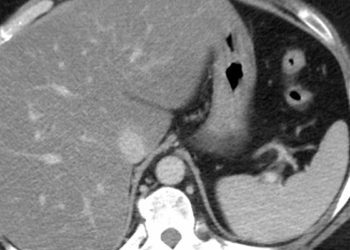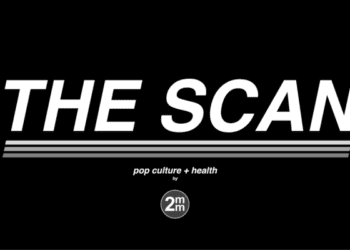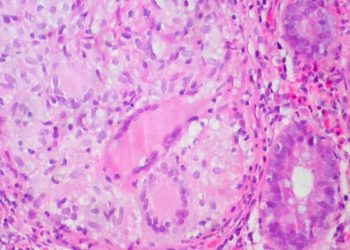Wellness Check: Nutrition
2 Minute Medicine is pleased to announce that we are launching Wellness Check, a new series dedicated to exploring new research evidence focused on wellness. Each week, we will report on articles examining different aspects of wellness, including (but not limited to) nutrition, sleep, reproductive health, substance use and mental health. This week, we explore the latest evidence-based updates in nutrition.
1. States requiring women, infants, and children program beneficiaries to either mail or present proof of beneficiary status to reload their benefits had decreased program participation during the COVID-19 pandemic.
2. Offering online benefit reloading may reduce barriers in assessing nutritional support program.
Evidence Rating Level: 2 (Good)
The Special Supplemental Nutrition Program for Women, Infants, and Children (WIC) provides nutritional support for women and children in poverty through either paper vouchers or electronic benefit transfer (EBT) debit cards that can be used to purchase WIC-approved groceries. Despite a Congressional mandate of full transfer to EBT by 2020, several states had not transitioned to EBT cards (“offline states”) by the advent of the COVID-19 pandemic. During the pandemic, accessing benefits reloading in person may have been additionally difficult, resulting in decreased utilization of the program and worsening of childhood food insecurity. However, whether participation and utilization of the WIC program is affected based on the mode of benefit reloading has not been systematically studied.
In this retrospective cohort study, 40 states (7 “offline states” and 33 “online states”) were included. States which transitioned form of benefit during the pandemic were excluded from analysis. The primary outcome was number of WIC beneficiaries per month from January 2019 to January 2021. As a control for general changes in service utilization, participation in SNAP (Supplemental Nutritional Assistance Program), a nutritional support program that is fully online in all states, was examined in parallel.
This study found that states with offline benefits had a decrease in participation (-4.3%) while states with online benefits had increased participation (3.49%). Furthermore, no significant changes in SNAP participation were found between offline and online states. However, this study was limited by its aggregate design and could not account for changes in WIC eligibility, poverty status, or other confounding factors that could have impacted participation in the WIC program. Nonetheless, this study highlighted the large impact a policy could have and encourages further study on improving barriers in accessing public programs.
1. Participants enrolled in the Supplemental Nutrition Assistance Program receiving monthly subsidies for food purchases had increased purchases of fresh fruit and vegetables.
2. Participants did not increase purchase of less healthy foods.
Evidence Rating Level: 2 (Good)
Fresh fruit and vegetables are an essential part of a nutritious diet but are not accessible to everyone. SuperSNAP serves as a nutritional support program that provides an additional $40 per month for the purchase of fresh fruits and vegetables to beneficiaries of the Supplemental Nutrition Assistance Program (SNAP), a program aimed to mitigate general food insecurity in the US. However, the efficacy of SuperSNAP in altering food purchasing patterns has not been tested.
This retrospective cohort study compared purchase history of 436 SuperSNAP participants with 33,246 SNAP beneficiaries who shopped at the same stores but were not participating in SuperSNAP. The study also compared purchases in participants before and after the start of SuperSNAP program. Transaction records were extracted from ~500 supermarkets in North Carolina from October 2019 to April 2020. The primary outcome was monthly spending on fruits, vegetables, legumes, and nuts. Secondary outcomes examined spending on less healthy food categories as a potential negative impact of increasing purchasing capacity.
The study found that SuperSNAP participants had increased monthly purchases of fruits, vegetables, nuts and legumes (difference of $31.84) but minimal increase in spending on less healthy foods (difference of $1.60). Monthly spending on sweetened beverages also decreased. However, this study was limited in that the participants in SuperSNAP were identified in primary care clinics as patients likely to benefit from increased fruit and vegetable intake due to existing diabetes or obesity. Therefore, differences in health motivation and behavior could have confounded the effect of monetary subsidy on changes in purchasing behavior. Nonetheless, this study was significant in suggesting subsidized programs such as SuperSNAP could increase the purchasing of healthy foods.
Healthy foods are associated with lower risk and severity of COVID-19
1. In this study, higher quality diet was associated with lower risk of COVID-19.
2. Amongst participants living in areas of high socioeconomic deprivation, the association between poor diet quality and COVID-19 risk was more evident.
Evidence Rating Level: 2 (Good)
Patients with metabolic diseases such as obesity and Type 2 diabetes have been found to have increased risk for COVID-19 incidence and outcomes. Diet plays a critical role in these metabolic diseases but how quality of diet impact risk and severity of COVID-19 has not been well-characterized.
This prospective observational study followed 592,571 participants from the United Kingdom (UK) and United States (US) between March 24, 2020 and December 2, 2020 as a part of the smartphone-based COVID-19 Symptom study. Patients with symptoms of COVID or a positive COVID test prior to start of study and patients who were younger than 18 years old, pregnant, and who only logged 1 daily assessment during follow-up were excluded. Assessment of dietary patterns prior to observational period was done using questionnaires and the Plant-Based Diet Index (hPDI), with higher scores correlating with more intake of fruits, vegetables, and whole grains.
In this study, 31,815 participants developed COVID-19 during the study period. Patients in the highest quartile of diet score had 9% lower risk of developing COVID-19 and 41% lower risk of developing severe COVID-19 compared to patients in the lowest quartile of the diet score. Strikingly, the inverse association between diet quality and COVID-19 risk was more evident in participants living in areas of high socioeconomic deprivation. However, this study was limited in that the assessment of diet quality was only in the pre-observation period, which did not account for potential impact of the pandemic on food access. Nonetheless, this study was significant in suggesting that policies that work to ensure food security in groups disparately effected by COVID-19 is critical.
Nonnutritive sweeteners elicit more neural response to food cues compared to sugar
1. In this study, nonnutritive sweeteners (NNS) resulted in higher circulating levels of glucose, insulin, and glucagon-like peptide 1 (GLP-1) compared to nutritive sugars (NS).
2. Obesity and female gender were associated with greater neural response to food cues after consuming NNSs compared to NSs.
Evidence Rating Level: 1 (Excellent)
Nonnutritive sweeteners (NNSs) are a common ingredient in low-caloric food and beverages. However, how NNSs impact appetite, neural responses to high-calorie food cues, and metabolic responses compared to nutritive sugar (NS) remains understudied.
This randomized cross-over trial examined brain activity, metabolic responses, and eating behaviors after consumption of NNS compared to NS amongst 74 healthy young adults across a wide range of body mass indices (BMIs) at the Dornsife Cognitive Neuroimaging Center of University of Soutern California. Participants fasted for 12 hours prior to consuming drinks containing either NNS, NS, or water, randomized for each of three visits. Blood was sampled pre- and post- consumption to measure metabolic outcomes. Participants also underwent functional magnetic resonance imaging (fMRI) testing approximately 20 minutes after ingestion of the drink and were allowed to eat ad libitum 125 minutes after the drink. Participants with a history of eating disorder, diabetes, or other medical conditions were excluded. Primary outcomes of interest were effect of BMI and sex on metabolic and neural responses to high-calorie food cues following NNS vs NS consumption.
Compared to NS, NNS consumption resulted in higher circulating glucose, insulin, and GLP-1 levels. Individuals with obesity (but not overweight or health-weight individuals) exhibited greater neural responses to food images in reward-related regions of the brain after ingesting NNS compared to NS. In addition, female participants responded with increased neural food-cue reactivity after NNS consumption compared to male participants. This study was limited in having just a one time, one-dose exposure to NNS vs NS, considering consumption of NNS is usually more prolonged and sustained. Nonetheless, this study was significant in suggesting certain biological factors may influence the effects of NNS.
Image: PD
©2021 2 Minute Medicine, Inc. All rights reserved. No works may be reproduced without expressed written consent from 2 Minute Medicine, Inc. Inquire about licensing here. No article should be construed as medical advice and is not intended as such by the authors or by 2 Minute Medicine, Inc.







